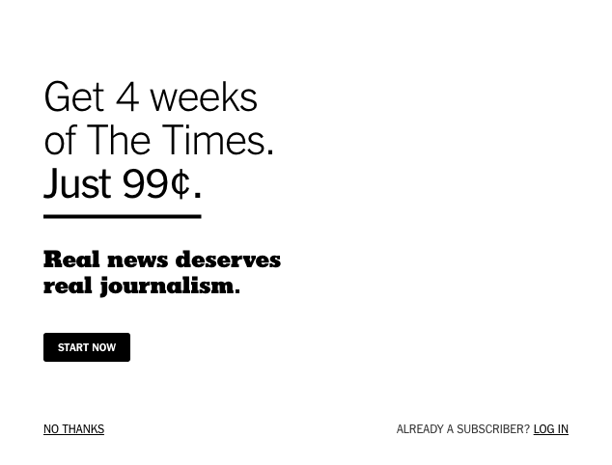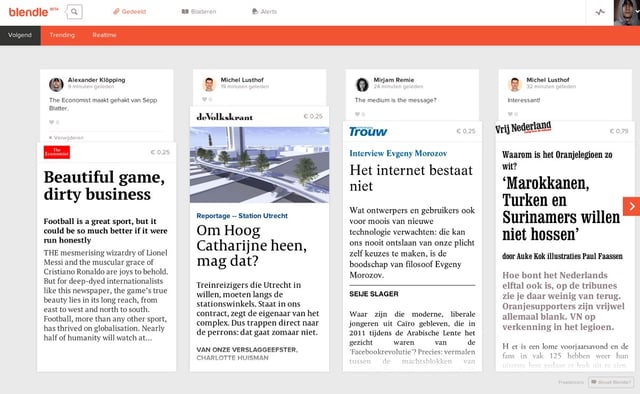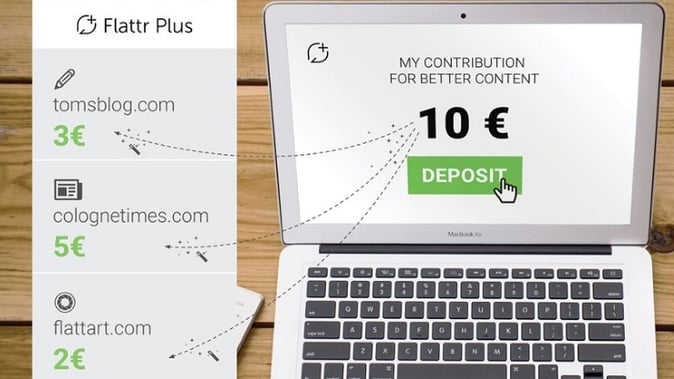For those outside the digital publishing world, the woes of online content creators can be hard to understand. Between crafting the perfect content, building a loyal following, and finding the right way to make money, publishers everywhere struggle to find success online. But before we dive into the plight of modern publishers, let’s step back to the innocent days before the Internet.

Let’s imagine you run a toy store where all the products are free. You produce everything yourself, spending your days whittling toy trains, sewing fuzzy teddy bears, and painting tiny smiles on baby dolls. You work hard, but you love your craft.
When you get your first customer, you’re so delighted that you don’t even ask them to pay. When the next customer arrives, you do the same, again, and again, and again. You hand out free toys to every person who walks through your door, until one day you realize you can’t possibly work like this and earn a living at the same time.
You decide to start charging for the toys. After all, you have a dedicated base of satisfied customers, why wouldn’t they want to support your business? But when your consumers see the prices, they flock to the store next door—the one that’s giving away handcrafted toys at no cost. Eventually, that store also starts asking customers to pay, so the consumers head for the free toy shop down the street. This happens time and time again: when one store charges for its products, consumers find infinite alternatives offering the same goods, completely free.
This is the state of digital publishing today: online publishers have to find a way to earn money in a market saturated with free content.
It’s a dilemma that digital publishers have struggled with for decades. They’re faced with the question not just of how to earn an income online, but more importantly, how to earn a reliable income so they can build a stable business. While the future may seem bleak for online publishers, the industry has been innovating and experimenting with new ways to make money online.
So, how exactly do publishers earn a living on the web? Here are just a few of the strategies and tools content producers use today:
Subscription-based paywalls
Paywalls and subscriptions go hand-in-hand. With the paywall model, publishers ask readers to pay a recurring fee for to get access to their content. Sites like The New York Times and The Financial Times have opted for a paywall approach to monetize their content. However, according to The Columbia Journalism Review, “only the most essential news providers” can succeed with hard paywalls.

Subscription-based paywalls are favored by some of the biggest publishing sites.
History proves that if readers can find the same content for free somewhere else, they’ll go with the no-cost option. For that reason, hard paywalls just don’t work for most online publishers. If however, a site is well-established enough to offer unique coverage of certain topics, like The Wall Street Journal with finance, then it might be able to succeed with a hard paywall.
Pay-per-view
As an alternative to the subscription-based paywalls, some companies are experimenting with pay-per-view options. Dutch startup Blendle believes readers who don’t want to splurge on a full subscription will likely pay a few cents to read an article.

Readers can pay for a single article with services like Blendle.
When new readers access a site using Blendle, they’re prompted to pay a small fee, usually under a dollar. If readers choose to continue, they can accept the price, but they’re only paying for a single article. If they want to read more, they’ll have to pay for each piece of content they consume.
This model works better for casual readers, as it removes the commitment barrier associated with standard paywalls. Still, it forces audiences to pay an upfront fee just to get access to online content, which might not always be a safe bet when free content is everywhere on the web.
Donations
Instead of blocking site content with paywalls, some publishers rely on donations to sustain their businesses. This option lets consumers decide whether or not to give money after they’ve read an article or followed a publisher for some time. Some publishers solicit donations from readers by posting links to PayPal, while others use services like Patreon to make a living.

Donation-based services let readers decide how much to give.
Patreon lets followers donate at certain tiers, and get rewarded with extra perks as a ‘thank you’ for their support. The company’s model is similar to Kickstarter’s crowdfunding approach. But, instead of helping creators launch one big project, they focus on generating subscription-like donations. The challenge is getting loyal readers to generate enough consistent revenue to support a sustainable business.
Advertising
The tried-and-true method for earning money online, advertising lets publishers offer free content to readers across the web. While some publishers aren’t keen on sharing a portion of their site with third party content, native advertising continues to serve as the best revenue stream for online publishers, as it provides stable income without adding barriers like paywalls.

Native ads let publishers earn money while keeping content free for readers.
While advertising revenue tends to be fairly stable, earnings can fluctuate somewhat, as they depend on view events and clicks. With the popularity of ad blockers like AdBlock that prevent advertisements from appearing on users’ browsers, the number of actual ad views is often much lower than publishers might hope. Loved by readers and hated by publishers, these services could pose a threat to publishers whose earnings depend on ad revenue.
But when ad blockers get in the way…
The industry keeps on innovating. Given the pervasiveness of online advertising, and the fact that so many publishers rely on ad revenue, the rise of AdBlock might not be such a good thing. After all, if paywalls won’t work for most sites and if stable advertising revenue is cut off, most publishers won’t have a good way to make a living.
That’s why some companies are trying to find a balance between helping publishers earn money and giving readers the experience they want.

Flattr Plus lets users choose how much to spend on their favorite publishing sites.
Flattr is one company offering an alternative approach to publisher earnings. In partnership with AdBlock, the startup has launched Flattr Plus, a product that lets audiences allocate a monthly budget for online media. Based on a user’s browsing activity and engagement with different sites, Flattr Plus will distribute the allocated sum among different online publishers.
It’s still too early to tell whether or not audiences will adopt something like Flattr Plus, but the partnership shows a promising shift in revenue possibilities for online publishers.
The state of online publishing today
At this point, publishers have only a handful of revenue options to choose from—each with its own benefits and drawbacks. For example, if a publisher wants to create free content, they’ll have to share some site space with advertisers. If they don’t want to earn money through ads, they’ll have to block content with paywalls.
None of these options has proven to be a cure-all for publisher qualms. For most publishers, relying on a single revenue source is not an effective business strategy. With so few revenue options, many publishers choose the middle ground, opting for a compromise between subscriptions, advertisements, and donations.
The reality is that earning a living online is hard to do. When the tradeoff is between making money, creating a positive reader experience, and attracting new readers with open access, online publishers are left with limited options for building a stable business.
For most publishers, there’s still no single solution that will solve their revenue woes, and it’s unclear whether or not that will ever change. Will audiences adopt new technologies and find more ways to compensate publishers, or will ads and paywalls continue to dominate the market?
